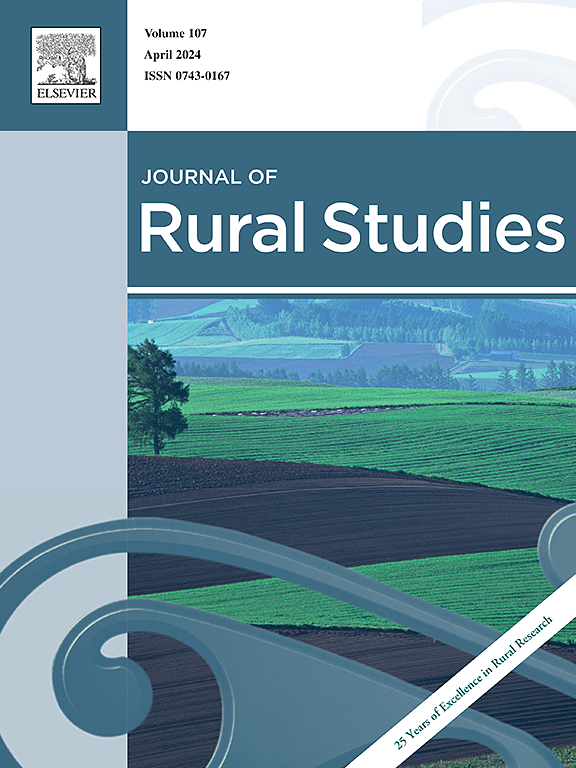卫星治理:欧盟共同农业政策中的遥感、官僚和机构
IF 5.1
1区 社会学
Q1 GEOGRAPHY
引用次数: 0
摘要
越来越多的欧洲成员国正在使用遥感技术来确定农民是否遵守共同农业政策(CAP)的措施。成员国使用卫星图像、航空照片和地理标记图片,并将其与先进的算法和机器学习相结合,以确定农民是否遵守了他们在共同农业政策战略计划中提出的要求。我们的研究分析了付费机构使用卫星图像和用于处理这些数据的软件,以了解这些技术如何使新的治理形式成为可能,以及这些技术对政府机构如何看待农民(字面上和比喻上)意味着什么。这项研究是基于对12个用于监控合规的技术开发人员的半结构化访谈,其中包括在付费机构工作的人员,以及在研究机构和公司工作的人员,他们为付费机构的遥感开发和使用提供技术支持。本研究揭示了共同农业政策(CAP)的治理,在遥感的推动下,促进了一种以严格控制和遵守为特征的审计文化。强调绘制、量化和代表农业是这一治理模式的基础,并推动了进一步的技术进步。然而,与会者强调了遥感技术在有效控制农业实践方面的缺点。通过将官僚主义和治理理论与技术乌托邦主义的批判观点相结合,我们研究了这些动态。我们的研究结果表明,目前遥感在亚太地区的应用不仅受到技术限制,而且受到现有治理框架的制约。推动量化导致受访者主张进一步采用技术创新来加强对农业的控制。总之,我们建议有必要改变政策,以摆脱这一技术陷阱。本文章由计算机程序翻译,如有差异,请以英文原文为准。
Governance by satellite: Remote sensing, bureaucrats and agency in the Common Agricultural Policy of the European Union
Increasingly, European member states are using remote sensing technologies to determine if farmers comply with measures of the Common Agricultural Policy (CAP). Member states use satellite images, aerial photographs and geotagged pictures, and combine this with advanced algorithms and machine learning to determine if farmers comply with requirements that they have set out in their CAP strategic plans. Our research analyses the use of satellite images and the software used to process this data at paying agencies to understand how these technologies are enabling new forms of governance and what these technologies mean for how farmers are seen (literally and figuratively) by government agencies. This research is based on 12 semi-structured interviews with the developers of the technologies used to monitor compliance, which includes people working for paying agencies as well as people working at research institutes and companies where they provide technical support to the development and use of remote sensing at paying agencies.
This research reveals that the governance of the Common Agricultural Policy (CAP), facilitated by remote sensing, fosters an audit culture characterized by strict control and compliance. The emphasis on mapping, quantifying, and representing agriculture underpins this governance model and drives further technological advancements. However, participants highlight the shortcomings of remote sensing technologies in effectively controlling farming practices. By integrating theories of bureaucracy and governance with a critical perspective on techno-utopianism, we examine these dynamics. Our findings indicate that the current application of remote sensing within the CAP is constrained not only by technical limitations but also by the existing governance framework. The push for quantification leads respondents to advocate for the further adoption of technical innovations to enhance control over agriculture. In conclusion, we suggest that a policy shift is necessary to break free from this technology trap.
求助全文
通过发布文献求助,成功后即可免费获取论文全文。
去求助
来源期刊

Journal of Rural Studies
Multiple-
CiteScore
9.80
自引率
9.80%
发文量
286
期刊介绍:
The Journal of Rural Studies publishes research articles relating to such rural issues as society, demography, housing, employment, transport, services, land-use, recreation, agriculture and conservation. The focus is on those areas encompassing extensive land-use, with small-scale and diffuse settlement patterns and communities linked into the surrounding landscape and milieux. Particular emphasis will be given to aspects of planning policy and management. The journal is international and interdisciplinary in scope and content.
 求助内容:
求助内容: 应助结果提醒方式:
应助结果提醒方式:


